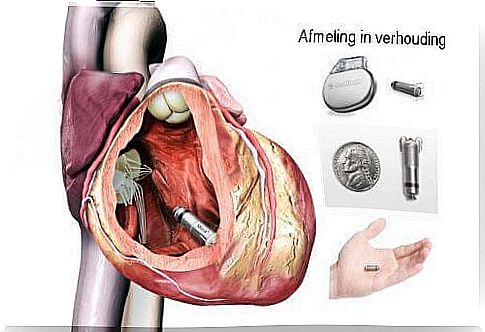Micra: The World’s Smallest Leadless Pacemaker

They call it the Micra. The name alone refers to the amazing technology behind this revolutionary pacemaker, a device that has quickly changed the lives of thousands of people.
Pacemakers have gotten smaller in recent years, but are still implanted for the purpose of monitoring the patient’s heart rhythm.
At the end of 2013, the Medtronic company presented to the world something very extraordinary, something quite advanced and a true revolution in the field of medicine.
This was the Micra, the smallest pacemaker in the world that a doctor could insert without surgery. It’s a great development that we’d like to share with you.
Micra beats with life
Although this device was already announced in 2013, we almost all know that it takes quite a long time for a new technology or a new drug to be promoted and distributed.
Micra received a CE mark in 2015, the point at which this device was promoted and distributed within the European Union.
After many rigorous examinations, it was possible to say with certainty that this new device was very efficient and reliable compared to the traditional pacemakers.
A revolutionary invention that has brought only hope and good results ever since.
The US FDA also approved the Micra in mid-2016. The implants done so far have been very positive and this little pacemaker is reportedly covered by almost all health insurance plans.
Features of the world’s smallest pacemaker

The Micra pacemaker is only twenty-four millimeters in size. This size corresponds to that of a euro coin.
In 2014 and 2015, this tiny pacemaker passed all experimental tests in a worldwide clinical trial, effectively confirming the innovative technology of this invention.
The world’s smallest pacemaker has the following features:
- It is a subcutaneous capsule, which has no wires or battery.
- No surgery is required to implant this pacemaker.
- The pacemaker is placed in the patient’s heart by doctors using transcatheter technology, where the pacemaker is guided through a vein in the patient’s groin to the right ventricle of the heart.

- This innovative pacemaker stays in place by inserting tiny teeth or stitches into the heart itself, without any wiring.
- Then the pacemaker starts sending out electrical impulses to maintain the heartbeat.
- It is not necessary to place a pouch (pocket) under the skin. That is, no one can see that the patient has a pacemaker because the pacemaker is invisible. The capsule remains firmly in the heart itself.
- Incisions, wounds that cause scarring or long hospital stays are no longer necessary.
A big change for heart patients
This new technology is not just a clinical advancement. Remember that the surgeries that heart patients previously had to undergo to implant a pacemaker had a strong psychological impact on these patients.
- This new pacemaker is very easy for the doctor to place without the risk of scarring. If problems arise, the doter can simply place the Micra again.
- Experts say the Micro is completely stable once installed. Unlike traditional pacemakers, the Micra does not damage the heart tissue in any way.
- This is an advance in the treatment of heart disease that offers doctors and patients a simple and safe solution.

Negative aspects to consider
The Micra pacemaker is currently a true revolution in the clinical world and for heart patients. However, doctors indicate that this is only the beginning.
We hope that this system can provide solutions for all kinds of cases in the coming years. It is also hoped that the durability of this device will improve in the future.
Currently, the Micra has the following limitations:
- The device has a service life of ten years. After that, a doctor should replace the device.
- Another detail that a patient should take into account is that the Micra is not suitable for people who are extremely overweight.
- What we should also remember is that the Micra is not suitable for people who already have a pacemaker.
Those patients who cannot currently benefit from this new technology will have to make do with the devices that are currently available to them to monitor their heart rhythm (which are just as effective).
In any case, we hope that science will continue to advance in the coming years to provide simple and effective solutions to problems such as heart disease.









